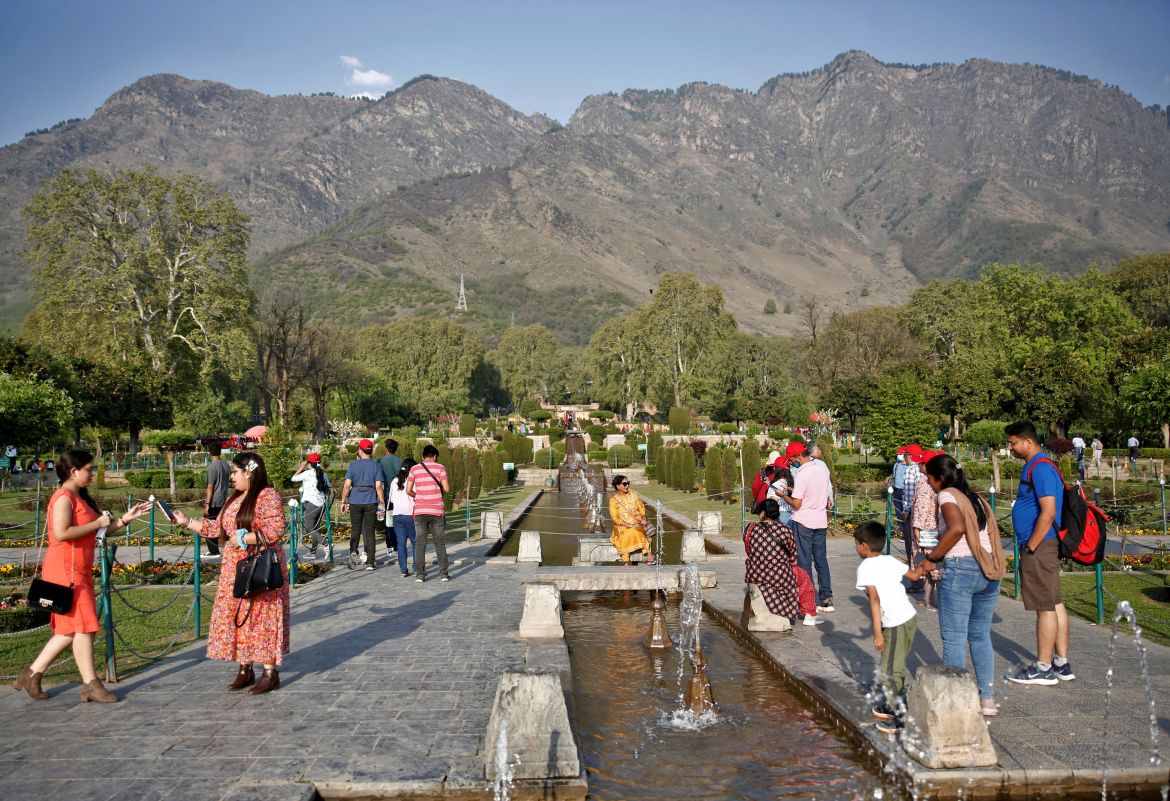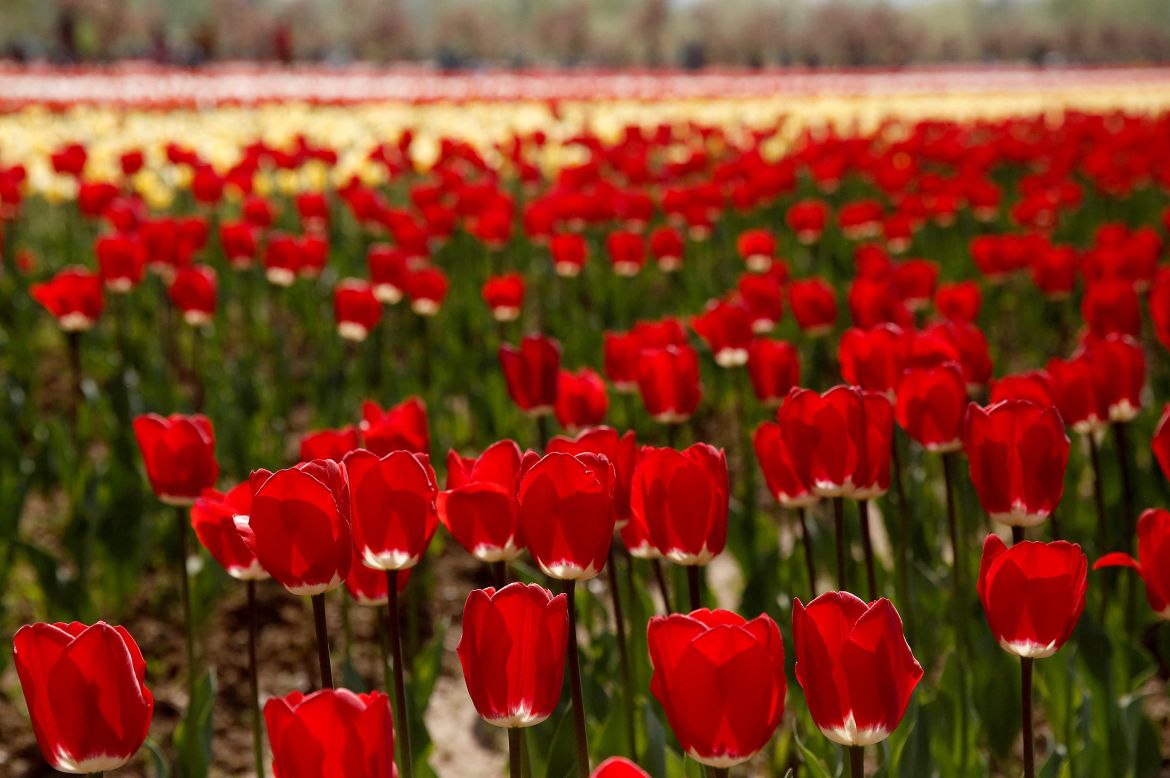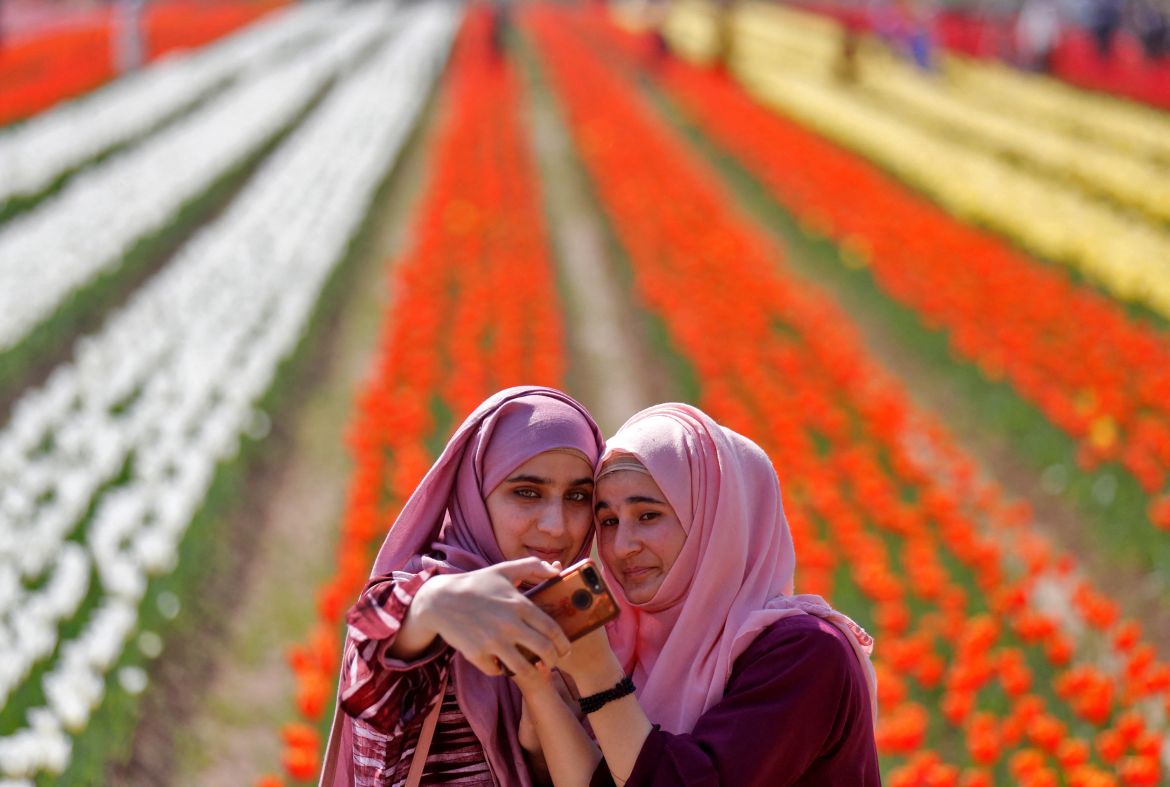In Pictures
‘More beautiful than Europe’: Kashmir tourism to hit 10-year high
Valley is attracting record tourism after easing of pandemic restrictions and some improvement in the security situation.

The Indian-administered Kashmir region is attracting record numbers of tourists after the easing of pandemic restrictions and some improvement in the security situation, bolstering local businesses.
Tourist arrivals are set to touch a 10-year high this year after more than 340,000 tourists have come since January, local tour operators and government officials said, despite restrictions on foreign tourists and some recent incidents of violence.
Tourism plunged in Kashmir after Prime Minister Narendra Modi’s government stripped the region of its special status and autonomy in 2019.
Later, the COVID-19 pandemic cut domestic and foreign tourist inflows.
“We are seeing the highest-ever tourist arrivals in Kashmir this year with 0.18 million tourists arriving in March only,” Sarmad Hafeez, Tourism Secretary for Jammu and Kashmir told Reuters news agency, adding April arrivals could surpass March.
Along with horticulture and agriculture, tourism is an important industry for Indian-administered Kashmir, contributing about seven percent to its economy, according to government data.
Touting itself as “Paradise on Earth”, the disputed region is home to Dal Lake, which was a favourite centuries ago for Mughal emperors escaping the summer heat of India’s plains.
The lake’s famous houseboats are major attractions along with the nearby Indira Gandhi Memorial Tulip Garden, Asia’s largest, and the region’s mountains and glaciers.
Hafeez said an advertising campaign across major Indian cities and the opening of new destinations were attracting more tourists.
Boatman Wali Mohammad Bhat, 54, said he had no work during the pandemic, “But, now I am earning 1,000 to 1,500 rupees ($13-$20) a day and we expect a good tourist season ahead.”
Many hoteliers and houseboat owners said tourists have booked rooms in advance for the next couple of weeks, and the earnings helped them to pay part of their debts.
After a gap of years, hoteliers, taxi drivers and tour operators are doing a brisk business, Ghulam Hassan Bhat, 75, a tour operator in Srinagar said.
“Hotels room tariffs have gone up by over 30 percent from the pre-COVID period, and there is a huge rush for bookings,” he said.
The rush is so strong that tour operators said they are having a hard time finding bookings for their clients as hotels are between 80 percent to 90 percent full and airfares have increased.
“Hotel rooms are not available in good locations,” said Pronab Sarkar, a New Delhi-based tour operator and the past president of the Indian Association of Tour Operators.
Many high-end tourists from wealthier Indian regions such as Gujarat, Delhi and Mumbai were opting for the Kashmir valley instead of destinations in Europe because of pandemic-related uncertainty, operators said.
“We have limited high-end accommodations and commercial transport services here which is a major challenge for us,” said Mohammad Yasin Tuman, Managing Partner Mascot Travels.
But the tourists are not bothered. Navdeep Singh and his wife Gurpreet Kaur came to Kashmir from Australia, saying they were mesmerised by its beauty.
“I have travelled all over Europe but this place is more beautiful. People are warm and friendly,” he said.






